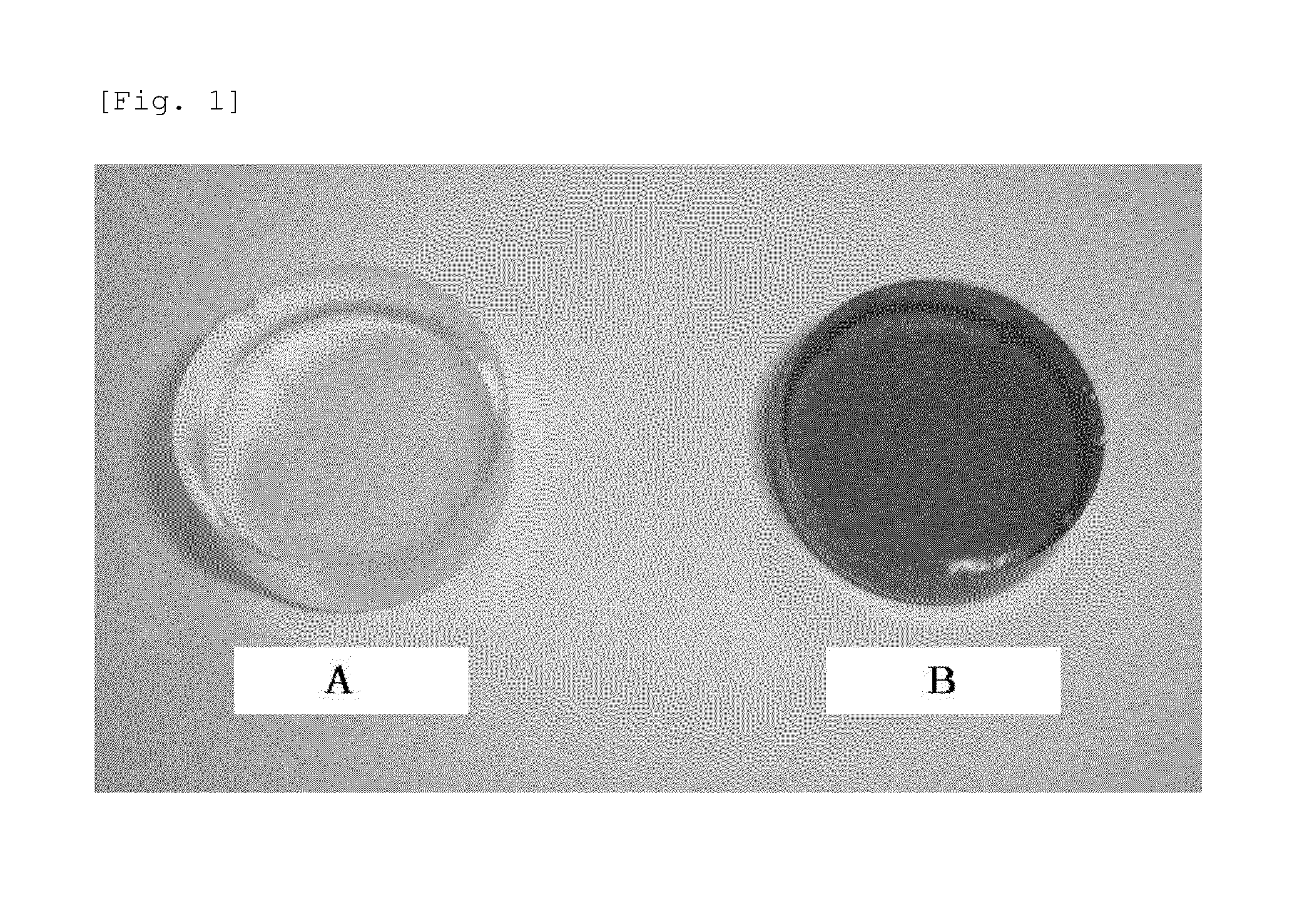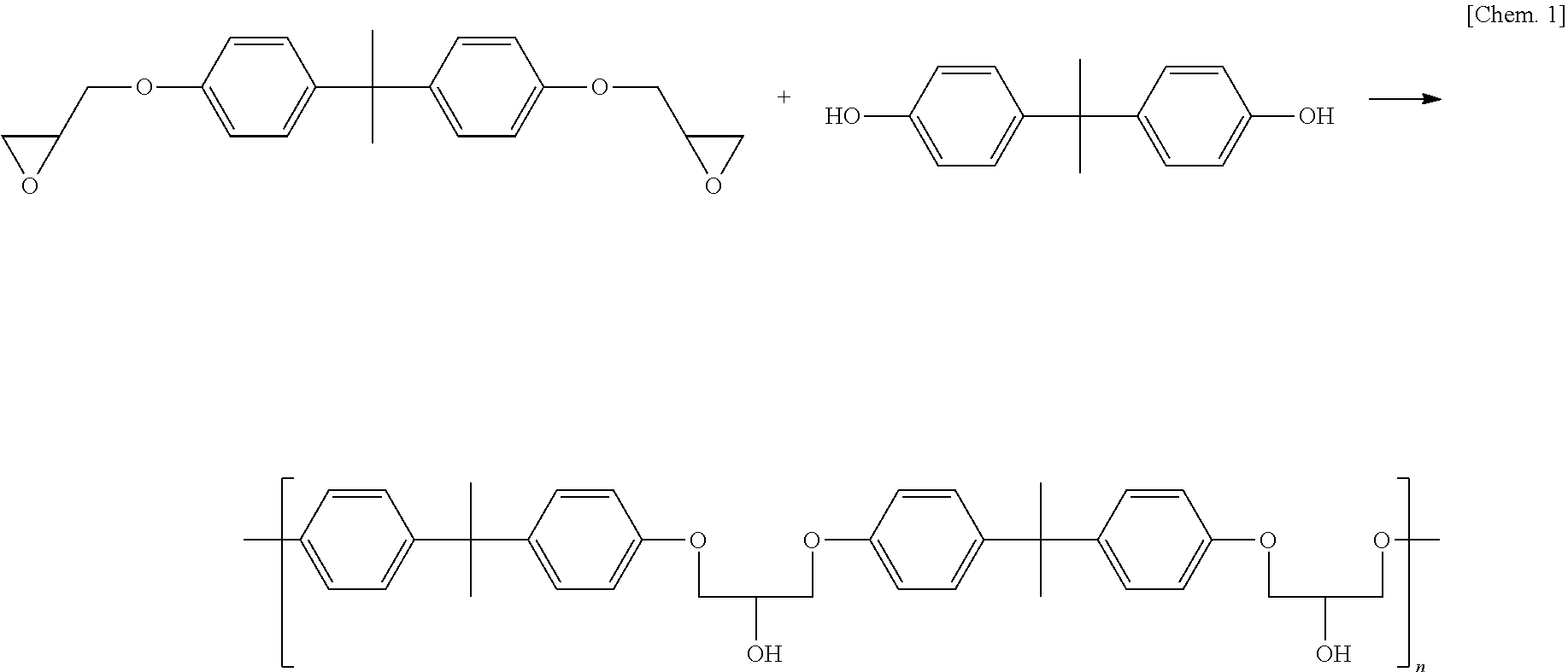Process for production of thermoplastic cured epoxy resin with transparency to visible light, and thermoplastic epoxy resin composition
a technology of thermoplastic resin and visible light, which is applied in the field of thermoplastic cured epoxy resin production with transparency to visible light, and thermoplastic epoxy resin composition, can solve the problems of inability to exert thermoplastic resin properties, reaction products are prone to gelate, and product use or application is limited, and achieve good thermoplasticity
- Summary
- Abstract
- Description
- Claims
- Application Information
AI Technical Summary
Benefits of technology
Problems solved by technology
Method used
Image
Examples
examples
[0040]The present invention is described in more detail below with reference to Examples, but the following description is only for illustration and the invention is not limited to these Examples.
examples 1 to 9
, Comparative Examples 1 to 6
[0041]Thermoplastic epoxy resin compositions were obtained by mixing raw materials for use shown in the following Table 1 in parts by weight given in the table.
[0042]The obtained compositions developed no polymerization reaction during their preparation and their storage at room temperature. The meanings of the codes in Table 1 are as follows.[0043]AER260: Bisphenol type liquid epoxy resin produced by Asahi Kasei Corporation (epoxy equivalent weight: 190 g / eq)[0044]BPA: Bisphenol A (hydroxyl group equivalent: 114 g / eq) produced by Mitsui Chemicals, Inc.[0045]TOTP: Tri-o-tolylphosphine (molecular weight: 304) produced by Hokko Chemical Industry Co., Ltd.[0046]TPP: Triphenylphosphine (molecular weight: 262) produced by Hokko Chemical Industry Co., Ltd.[0047]Triphenylimidazole: 2,4,5-Triphenylimidazole[0048]TBZ: A compound represented by the following formula, wherein n=3.
[0049]The obtained compositions were each put in an aluminum pan 18 mm in diameter, an...
example 10
[0050]Thermoplastic epoxy resin compositions (10-1)-(10-7) were obtained by the same procedure as that in Example 1 except that tri-n-octylamine was used as the curing accelerator (C) in the use amount indicated in Table 2. The cured products were evaluated for their appearance, solubility in solvent, and molecular weight by the same methods as those in Example 1. The results were shown in Table 2. In Table 2, no data means that no evaluation was performed.
[0051]Since the obtained cured products were remelted by only heating for 1 minute at 150 to 200° C., it was successfully confirmed that they were capable of being bended easily and they were straight-chain polymer having no cross-linked structure.
[0052]Flexural strength: The measurement of static flexural strength (MPa) (Examples 1, 2 and 7 and Comparative Examples 3 and 4) was conducted by a three-point bending test in accordance with ASTM D-790 using an INSTRON universal material tester. The shape of the specimen is defined by ...
PUM
| Property | Measurement | Unit |
|---|---|---|
| thickness | aaaaa | aaaaa |
| time | aaaaa | aaaaa |
| temperature | aaaaa | aaaaa |
Abstract
Description
Claims
Application Information
 Login to View More
Login to View More - R&D
- Intellectual Property
- Life Sciences
- Materials
- Tech Scout
- Unparalleled Data Quality
- Higher Quality Content
- 60% Fewer Hallucinations
Browse by: Latest US Patents, China's latest patents, Technical Efficacy Thesaurus, Application Domain, Technology Topic, Popular Technical Reports.
© 2025 PatSnap. All rights reserved.Legal|Privacy policy|Modern Slavery Act Transparency Statement|Sitemap|About US| Contact US: help@patsnap.com



